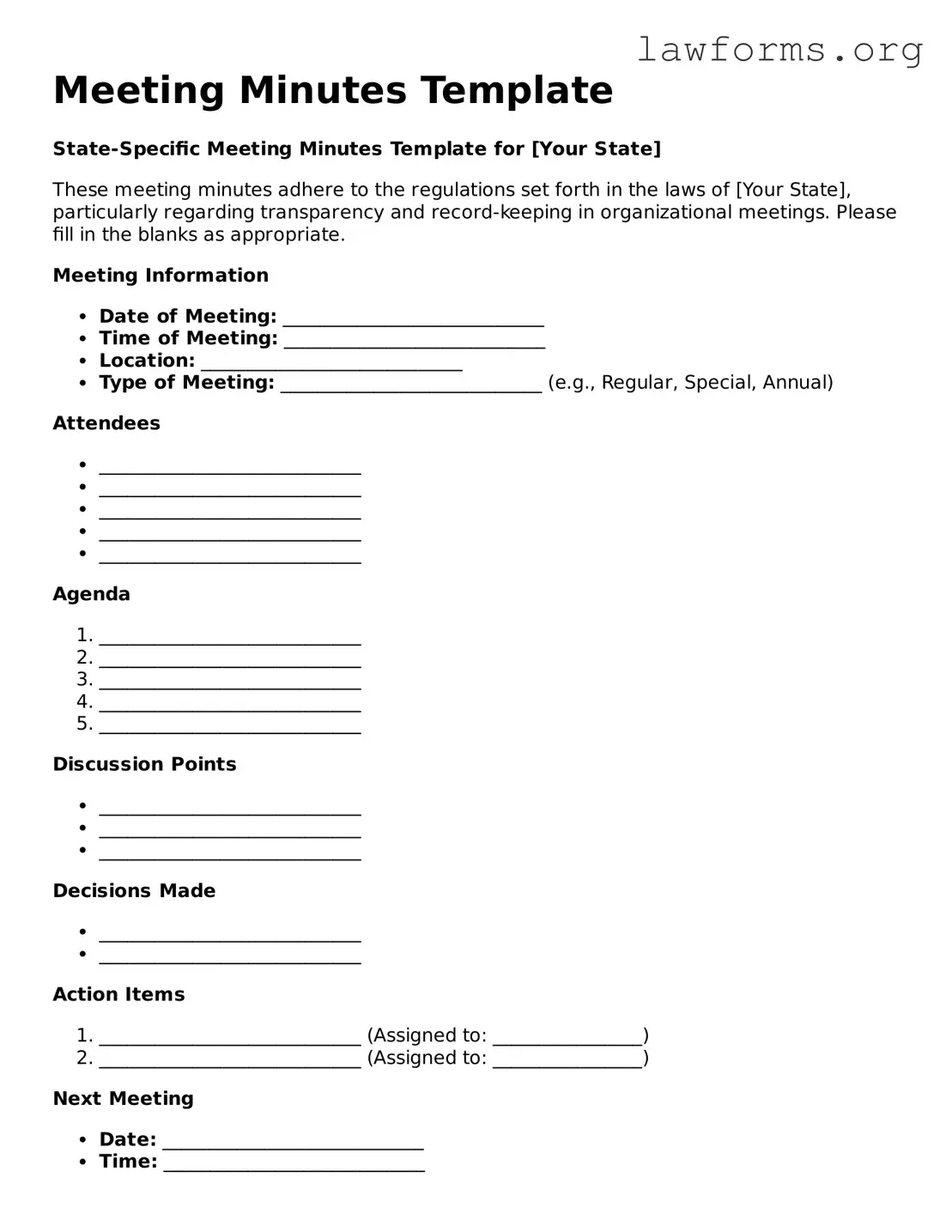Meeting Minutes Template
State-Specific Meeting Minutes Template for [Your State]
These meeting minutes adhere to the regulations set forth in the laws of [Your State], particularly regarding transparency and record-keeping in organizational meetings. Please fill in the blanks as appropriate.
Meeting Information
- Date of Meeting: ____________________________
- Time of Meeting: ____________________________
- Location: ____________________________
- Type of Meeting: ____________________________ (e.g., Regular, Special, Annual)
Attendees
- ____________________________
- ____________________________
- ____________________________
- ____________________________
- ____________________________
Agenda
- ____________________________
- ____________________________
- ____________________________
- ____________________________
- ____________________________
Discussion Points
- ____________________________
- ____________________________
- ____________________________
Decisions Made
- ____________________________
- ____________________________
Action Items
- ____________________________ (Assigned to: ________________)
- ____________________________ (Assigned to: ________________)
Next Meeting
- Date: ____________________________
- Time: ____________________________
- Location: ____________________________
